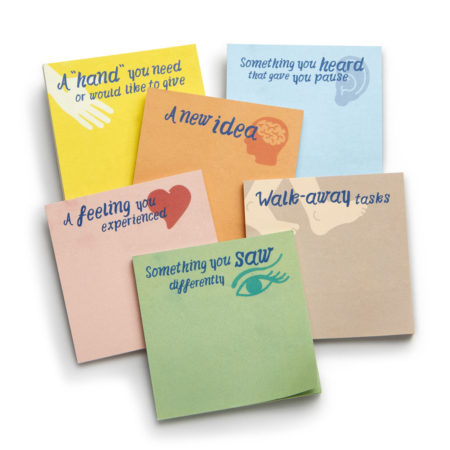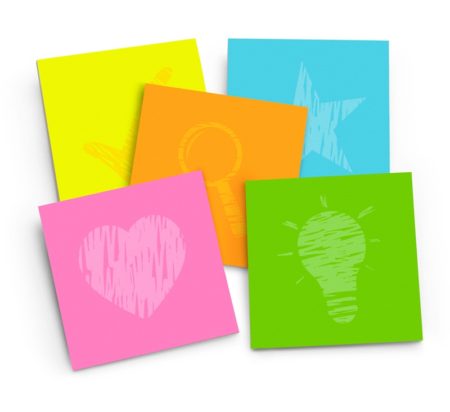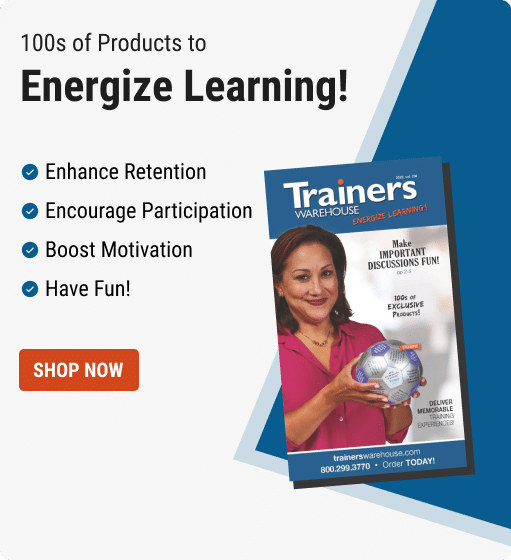Rose-Bud-Thorn for Processing and Reflection
You already know that learning requires an investment of time and mental focus. Listening to a lecture, reading a book, playing an experiential game, or watching a video can only get you so far. The real learning happens when you apply Thinking Methodologies to digest, discuss, and process the learning.
Tools for Reflection and Thinking Methodologies
Whether you’re processing and reflecting on material you just learned in school or training, an activity you experienced, a project you completed, or something else, Thinking Methodologies can help you debrief and process — that is, draw out meaning and apply learning down the road.
From the range of Thinking Methodologies available, choose the model that’s best suited to your content and needs:
Rose-Thorn-Bud
The Rose-Thorn-Bud model hones in on achievements, opportunities and obstacles. The versatile tool can be used to process the day’s events, a learning experience or even be used as an icebreaker. Questions that go with each prompt include:
ROSE
- What was the highlight of your day?
- How have you been successful?
- What did you like?
- Describe efforts that blossomed
- What are you most proud of?
THORN
- What went wrong during your day?
- What was most stressful?
- Identify causes of difficulty
- What impeded your efforts?
- What are you most fearful of?
- Did you experience pain points in the process?
BUD
- What are you looking forward to tomorrow?
- Describe opportunities that energize you
- What possibilities need growth and nurturing?
What? So What? Now What?
The What? Model is ideal in situations where different people might have different ideas about what was learned and its significance. The “Now What?” questions forces people to consider and commit to next steps, making this methodology ideal as a team-building game or meeting wrap-up.
Start-Stop-Continue-Change
Start-Stop is easily applied to a broad range of experiences and is a particularly useful construct for groups to evaluate current projects and processes.
“Body Smarts”
Body Smarts is a creative way to draw out observations and consider take-away learning points, using parts of the body as thought triggers:
- Brain- a new idea
- Hand – a helping hand you might need
- Heart – feelings you experienced
- Ear – something you heard that gave you pause
- Eye – something you saw differently
- Feet – an important take-away task

Design Thinking
Design Thinking is a popular methodology used to solve complex problems. The five-part model focuses on Understanding, Problem Definition, Ideation, Prototyping, Testing.
Putting Thinking Tools into Action
Facilitators, managers, and team leaders can use any of these Thinking Methodologies to frame discussions on the fly. However, participants might get more out of the experience if the leader plans and structures the conversation, giving participants time for individual reflection, small group sharing, then larger group discussion. The facilitation would look something like this:
- Individual reflection: Request that individuals jot down their thoughts on a sheet of paper or a Sticky Note (use different colors or icons to signify different questions/prompts).
- Small group discussions: When they’re ready, ask them to take about five minutes to discuss their ideas with others at their table. Encourage tables to continue to take notes either on a worksheet, Tabletop Whiteboard, or on the Sticky Notes
- Large group discussion: When the energy seems to drop, open up the conversation to the larger group, using either of these methods:
- Sticky Note Method: invite them to post their Sticky Notes on a poster, wall or board at the front of the room. Then, group similar comments together and see what themes begin to emerge.
- “Spokesperson” method: have one person speak on behalf of each group. Use a flip chart or overhead to capture ideas and refer back to them. If ideas are mentioned more than once, add a check mark to indicate popularity of that idea.
Equipped with some playful sticky notes and a structure for your conversation, the time spent in your meeting is sure to yield worthwhile insights!
See also . . .



1 thought on “Rose-Bud-Thorn for Processing and Reflection”